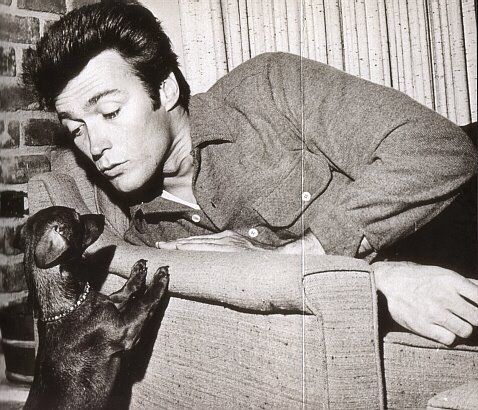|
Last Updated:
7/3/2025 6:04 PM © 2025 ATDR
|
| |
| Breed History |
| |
   |
Rumors abound that the Dachshund existed in Ancient Egypt after murals were discovered featuring short-legged dogs. However, the first official historical records of the modern Dachshund are from the 15th, 16th, and 17th centuries in European illustrations depicting badgers being hunted by long, short dogs with floppy ears and in books referring to "Tachs Kriecher" (badger crawler) or "Tachs Krieger" (badger warrior). In the early 17th century, German breeders created the beginnings of the breed we know and love today and called them Dachshunds (Badger-Dog). The original German Dachshunds were larger than the modern full-size variety, weighing between 30 and 40 lbs, and originally came in straight-legged and crook-legged varieties (the modern Dachshund is descended from the latter). Though the breed is famous for its use in exterminating badgers and badger-baiting, Dachshunds were also commonly used for rabbit and fox hunting, for locating wounded deer, and in packs were known to hunt game as large as wild boar and as fierce as the wolverine. In 1840 the first German all-breed studbook listed 54 Dachshunds.
Dachshunds have been kept by royal courts all over Europe, including that of Queen Victoria, who was particularly enamored of the breed, and Napoleon Bonaparte who is depicted with his dogs in several paintings. It is rumored that before Napoleon died, he requested that his beloved dachshunds be entombed with him. Supposedly, as they passed away, they were entombed in the pedestal feet of his sarcophagus. The English recognized the breed in 1870. In 1873 the breed was given separate classes, and in 1879 a Smooth Dachshund named "Feldman" was the first to be shown in the ring and in 1881 the first Dachshund Club in the world was founded in England. Germany's club, Deutche Teckel Klub, was founded in 1895. For years only the Smooths were shown in the ring, but in 1923 a Longhair named "Ratzmann von Habichtscof" won at Cruft's. Years later in the United States, "Brentwald of Joshua" was the first Wirehaired to win in the ring.
 
Between 1870 and 1885, German immigrants introduced Dachshunds to the United States. William Offer of Preston, MN was one of the first in the United States to begin breeding, showing and exhibiting Dachshunds in 1880. The breed was admitted into the American Kennel club in 1885 when a dog named "Dash" was enrolled in the AKC Stud Book. The Dachshund Club of America was organized in 1895 and is the eighth oldest breed club to become a member of the American Kennel Club. By 1914, they were among the 10 most popular entries in the Westminster Kennel Club Show.
During World War I, there was much disdain over anything considered German and unfortunately the Dachshund was a victim of much hostility. They were sometimes the victims of stonings, and dachshund owners were often called traitors. As a result, the number of dachshunds in the United States and Britain dwindled. The AKC tried to help by changing the breed's name to Badger Dog in 1919, but it was returned to Dachshund in 1926. After the war, US soldiers, beguiled by the breed, brought Dachshunds home from Germany that acted as ambassadors for the breed. A few U.S. breeders slowly rebuilt the gene pool by importing German stock, and the breed began to increase in popularity again.
Dachshunds returned to the show ring in the 1920's in the Working group. Then they moved to the Sporting group for a few years before settling into the Hound group in 1931. They are the only breed to win in all three groups. "Kensal's Call Boy" won the breeds first Best In Show. In the late 1930's, "Herman Rinkton" received worldwide attention by winning 14 Best In Shows. In 1931, "Beauty" was the first Longhaired Dachshund registered with the AKC. "Kobold von Fuchenstein" was the first Longhair to compete in the United States, and in the 1940's "Antonio of Gypsy Barn" was the first Longhaired Best In Show winner. In 1935, Dachshunds were added to AKC field trials to encourage hunting capacity and exemplary conformation and temperament. The National Miniature Dachshund Club was formed in 1952 to serve only the miniature Dachshund variety.
The advent of World War II did not yield the same effects as World War I, because by then American breeders were well established and Dachshunds were very popular.
|
|
Famous Dachshund Owners:
    
Queen Victoria, Napoleon Bonaparte, Clark Gable, Ginger Rogers, Carol Lombard, EB White, Pablo Picasso, Andy Warhol, William Randolph Hearst, John Wayne, Brigitte Bardot, Joan Crawford, Clint Eastwood, Christian Slater, Marlon Brando, Loni Anderson, Dick Clark, Elizabeth Taylor, Jacques Cousteau, George Harrison, Teddy Roosevelt, Doris Day, James Dean, Patty Duke, Errol Flynn, Wayne Gretzky, Angie Harmon, David Hasselhoff, Rita Hayworth, William Randolph Hearst, David Hockney, Winona Judd, Dennis Miller, Madonna, Mary Tyler Moore, Cole Porter, William Powell, Priscilla Presley, Vincent Price, Isabella Rossellini, Maria von Trapp
    
|
*** For more Doxie History, Facts & Information, we recommend THE DACHSHUND HANDBOOK by D. Caroline Colie, PhD and DACHSHUNDS FOR DUMMIES. Much of this information was paraphrased from these books.***
| |
|




















